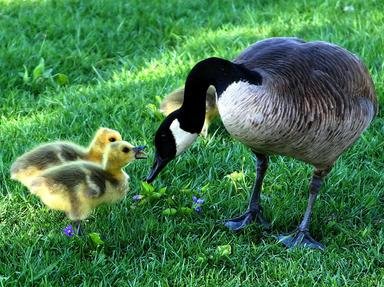Quiz Answer Key and Fun Facts
1. Gavia immer is a particularly vocal bird that is famous in Canada thanks to its appearance on the one-dollar coin. By what name is it better known?
2. Martes americana atrata is slightly larger version of the American marten - its close relative. It is endemic to which large Canadian island?
3. Which of these is a generally nocturnal wild cat with distinctive black ear tufts that is found across forested areas of Canada and Alaska?
4. The story of Father Christmas circumnavigating the world each Christmas Eve in a sleigh pulled by flying reindeer is known to billions of people worldwide. However, the non-flying varieties of these animals are common woodland creatures in Canada and known by what alternative name?
5. The Canadian horse is a well-known equine breed that developed from the descendants of several shipments of horses sent to Canada by King Louis XIV of France in the 17th century. In which war was a large proportion of their population killed?
6. The Canada goose, with its distinctive black head and neck feathers, may be native to Canada and the United States but it is also a common sight in northern Europe and New Zealand thanks to human intervention. Which of these options is NOT a subspecies of Canada goose?
7. If you are on a trip to Vancouver and want to see a Vancouver Island marmot, what sort of animal should you be keeping an eye out for?
8. Which of these subspecies of American black bear is native to British Columbia and often known as the 'spirit bear'?
9. Which of these is a real fish that you might spot near the source of one of the major rivers of the Canadian province of Alberta?
10. Which of these animals had the distinction of being legally declared an official symbol of Canada in 1975?
Source: Author
Fifiona81
This quiz was reviewed by FunTrivia editor
guitargoddess before going online.
Any errors found in FunTrivia content are routinely corrected through our feedback system.

